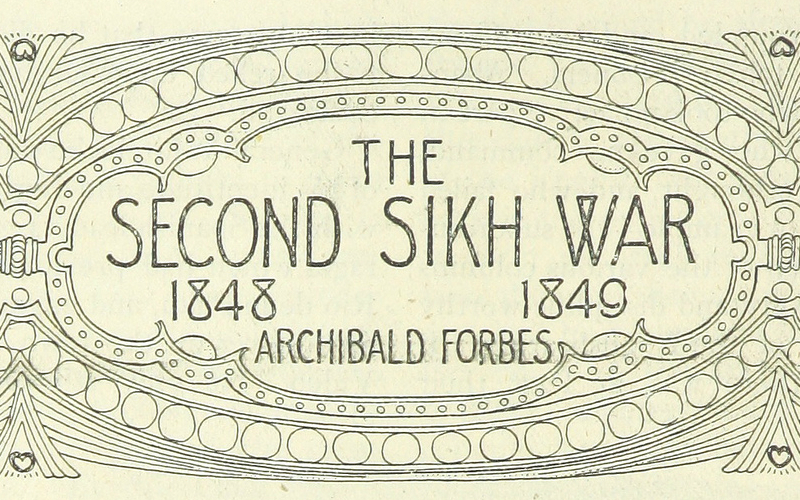(W)Archives: Art and The Glamor of War in the Good Old Days

Today’s historical documents are a collection of artistic depictions of war digitized by the British Library on their remarkable flickr account. They come from the chapter headings in the fin de siècle book Battles of the 19th Century, a compendium of battle description by Archibald Forbes and others. The book’s Art Nouveau décor offer a striking visual reminder of just how much fun war was for Europeans at the turn of the century—at least in the popular imagination. Complete with primitive or oriental motifs, these illustrations reflect an era in which colonial wars were fought in exotic locales against poorly armed opponents.
Needless to say, this was all about to change with outbreak of World War One. As Paul Fussell enthusiasts know better than anyone else, the Great War permanently changed the way the Western world thought about combat. The intensity, violence, and inconclusive outcome of the war represented a shocking transition from many of the conflicts depicted in Forbes’s book.
Of course, many of the factors that contributed to the horror of World War One had been present in the 19th century. Consider “The Charge of the Light Brigade,” one of history’s most famously heroic war poems, written about the 1854 Battle of Balaclava. Almost all the elements that later gave World War One its anti-heroic character appear in this poem, yet they are presented in terms of martial valor. Tennyson depicts the brigade’s charge as one with massive casualties (“All that was left of them / Left of six hundred”) from artillery rather than hand to hand combat (“Storm’d at with shot and shell”), as well as one of utter futility resulting from commanders’ incompetence (“Was there a man dismay’d? / Not tho’ the soldier knew / Someone had blunder’d”). Moreover, it was all fought for a cause—preventing Russian expansion in the Balkans—whose importance would have been no more obvious to ordinary citizens than those that sparked the First World War.
In it’s scale alone though, World War One burned the inescapably brutal aspects of war into the European mind. For those who embraced pacifism in the 1920s, the fanciful art of Forbes’ book would have seemed obscene. And it was certainly too light-hearted for the Fascists, whose continued enthusiasm for war sought inspiration in a far harsher form of art-deco.
Nick Danforth is a doctoral candidate in Turkish history at Georgetown University. He writes about Middle Eastern history, politics, and maps at midafternoonmap.com.

